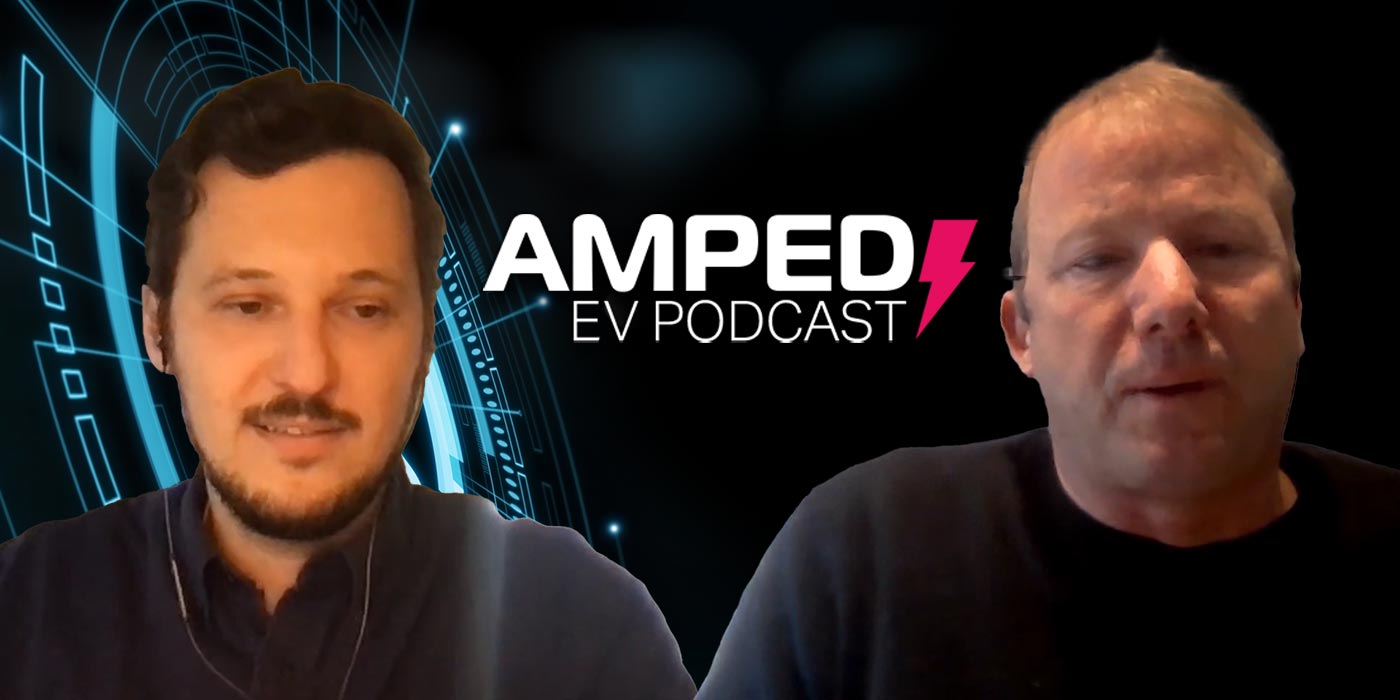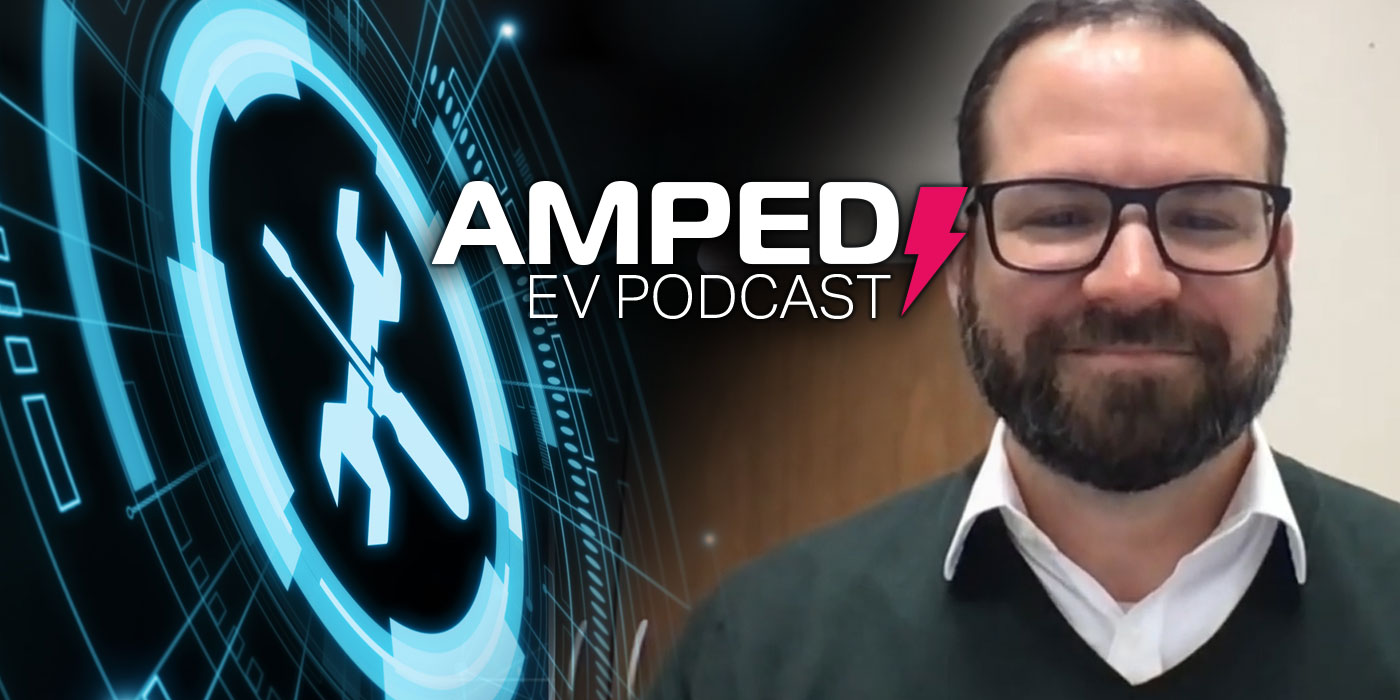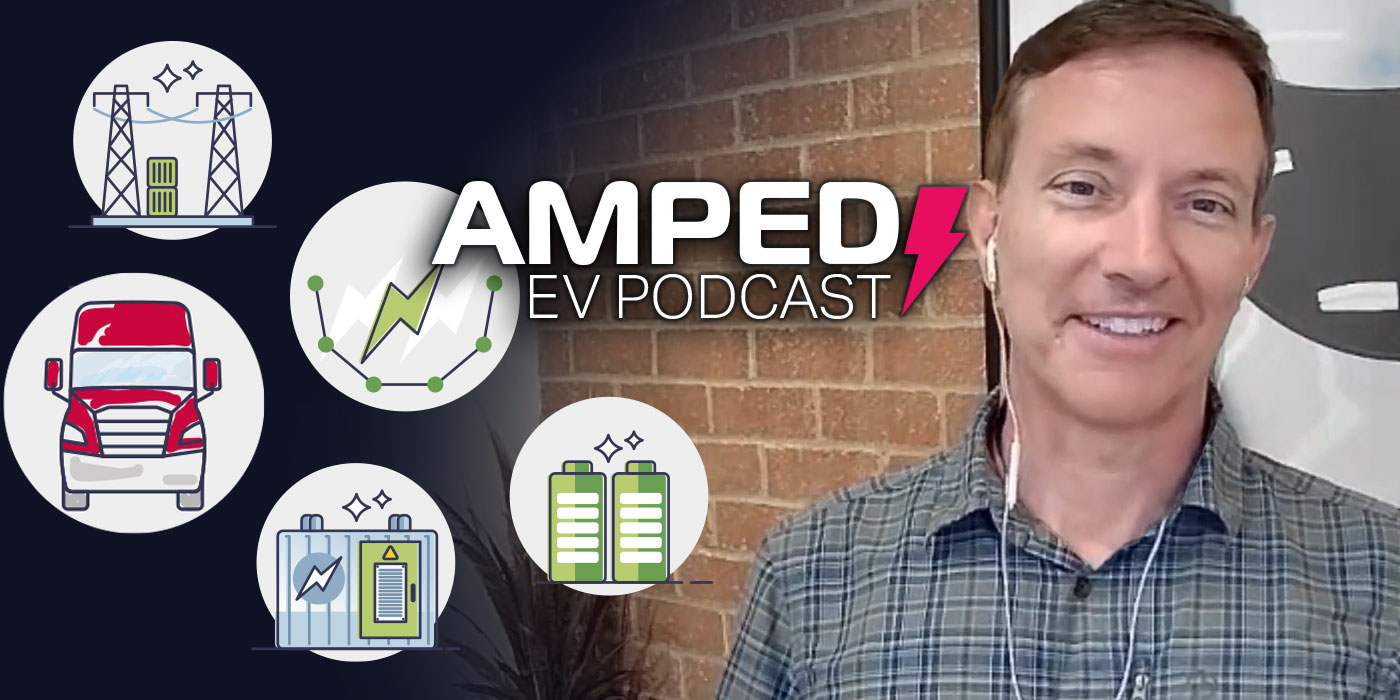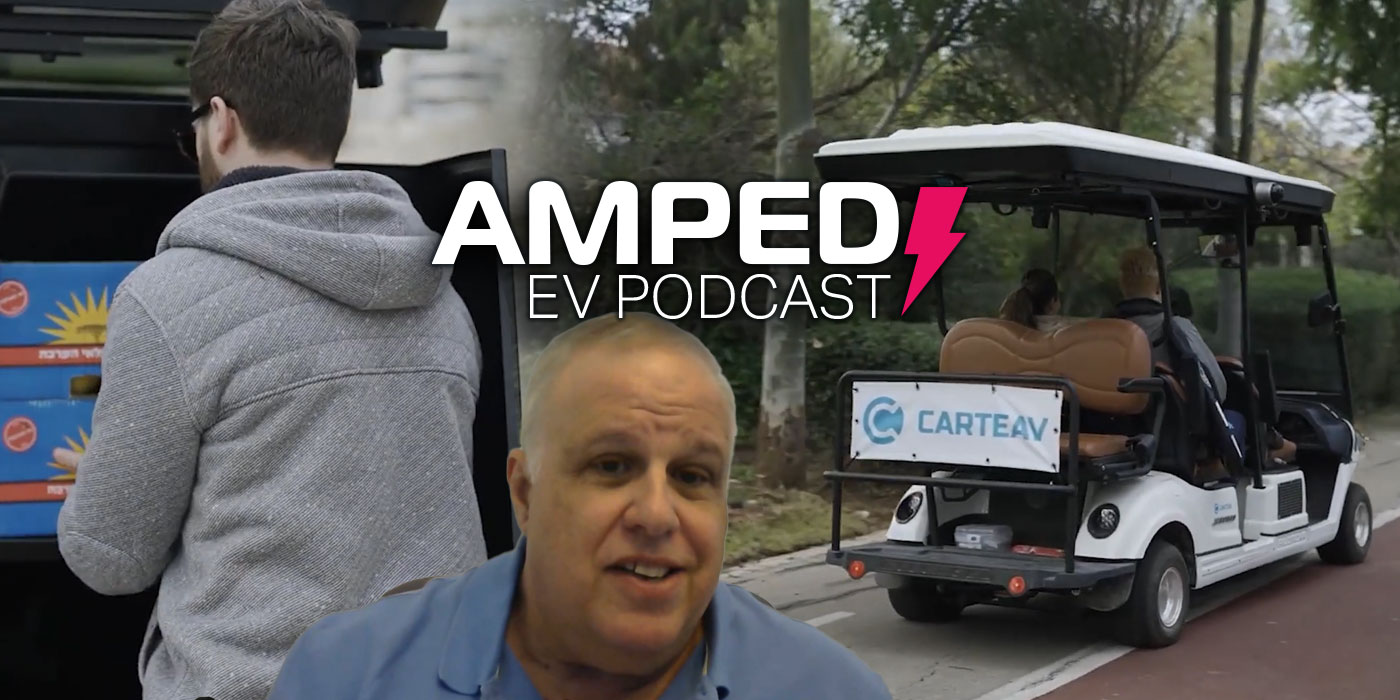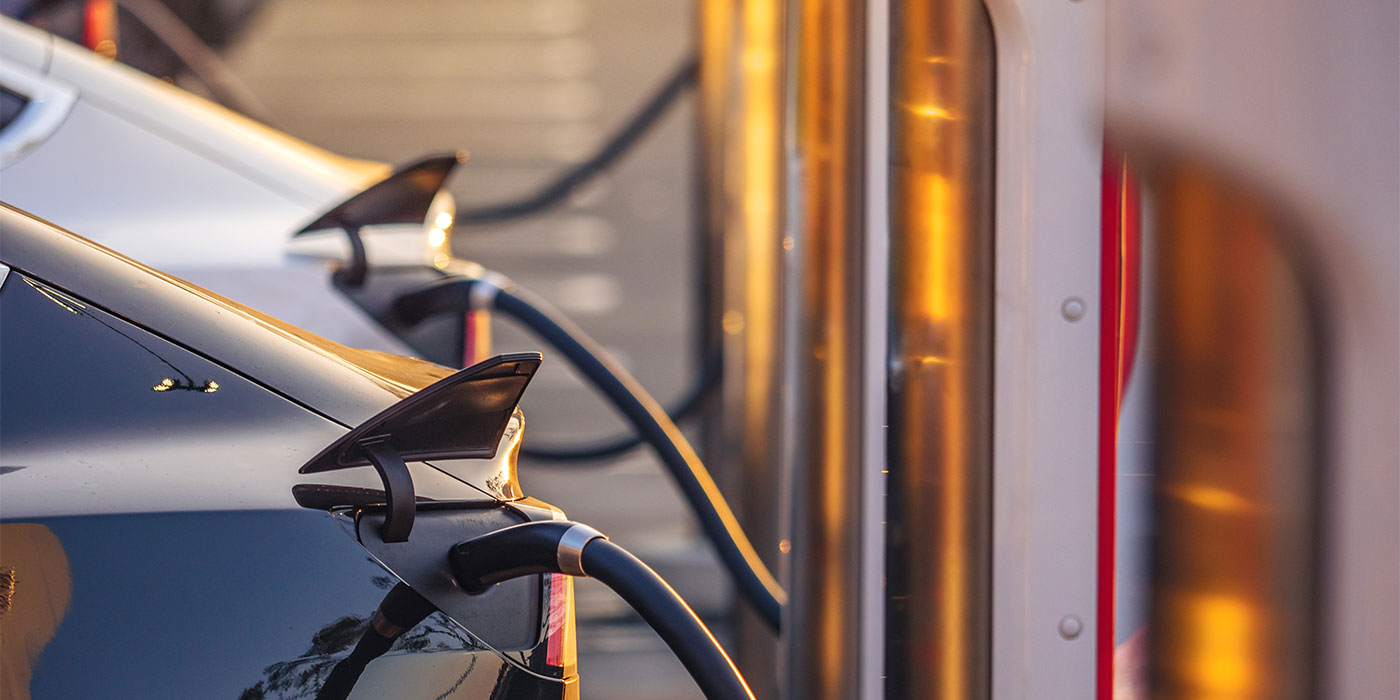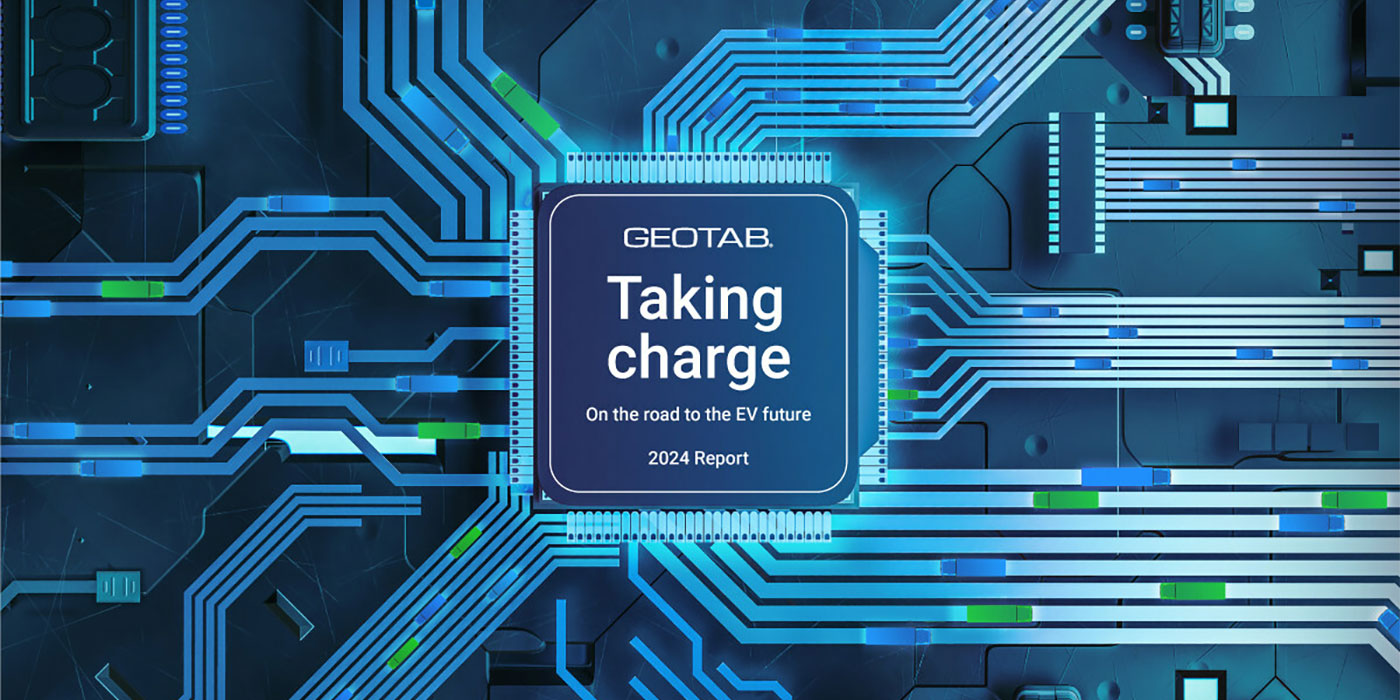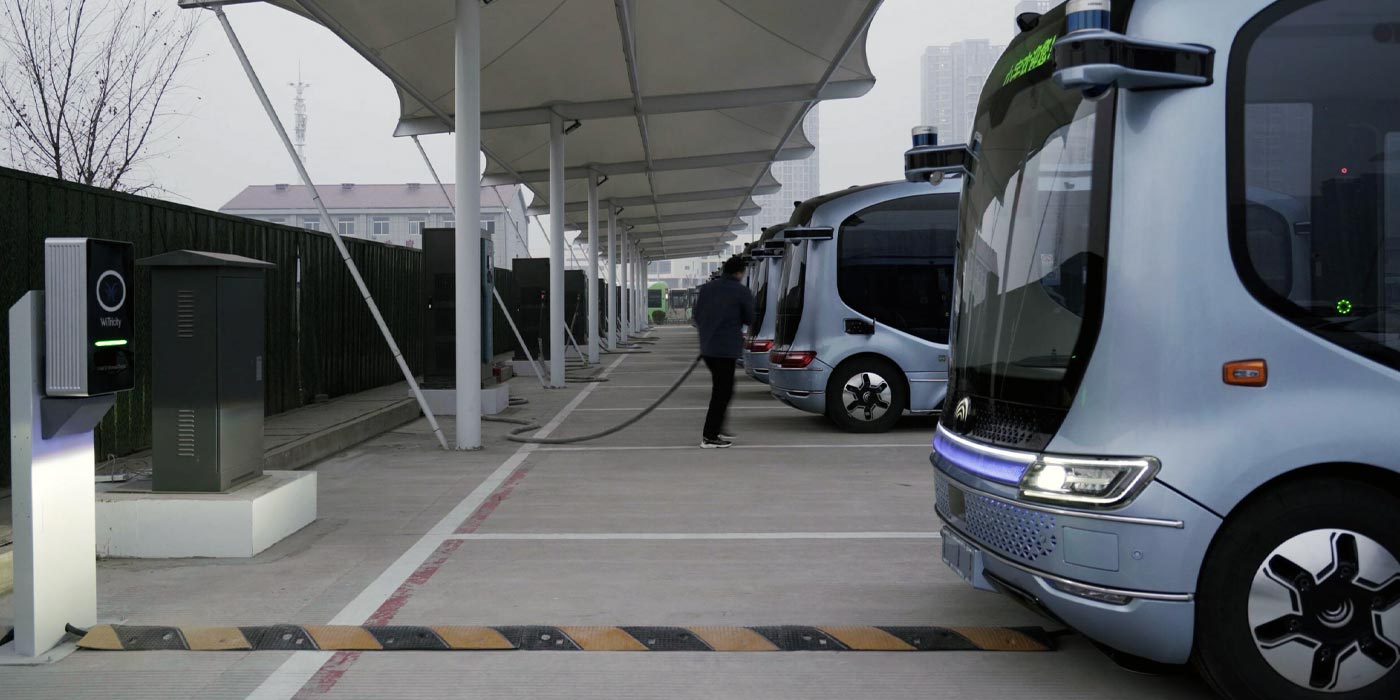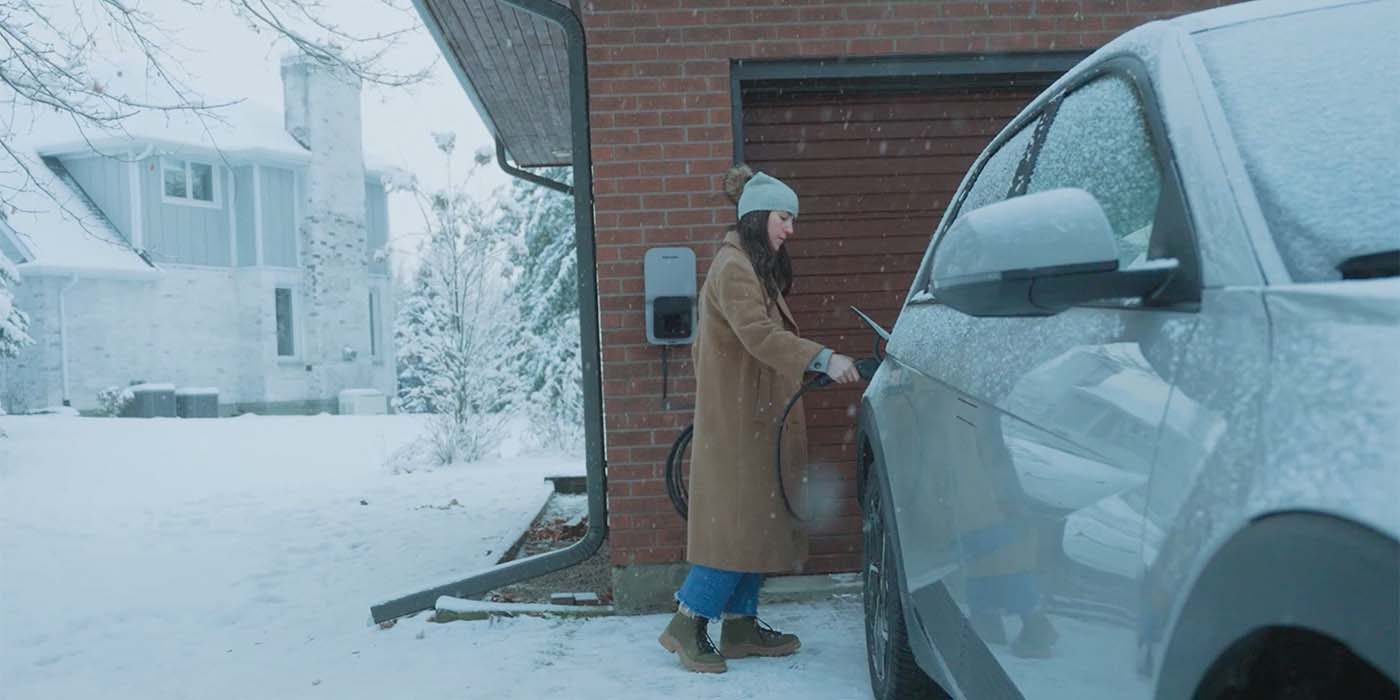Think back to the year you first received your driver’s license. What did you do? Maybe driving to school or across town to a friend’s house was your idea of excitement. Maybe you even braved the highway, holding your breath on the onramp until you safely merged into traffic.
When multiple-time Guinness World Record holder Rainer Zietlow first received his license in 1988, one of his first missions was to conquer the Sahara Desert via a six-week trek.
“My friend told me about his father doing a tour through the Sahara and I said, ‘Hey, let me buy a car and I join you,’ Zietlow said. “[There were] no signs, with nothing to support you. Some people got stuck in the sand, some even would drive by without getting enough water. That was really an adventure.”
It was the beginning of a lifelong passion for pushing the limits of what we believe can be accomplished in a vehicle, and has evolved into Zietlow crushing over a dozen world records. Today, he mainly focuses on beating records while driving electric vehicles.
“The interesting thing is that since 2020, you cannot ask anyone about combustion engine projects. They will only accept EV projects,” he says. “My last combustion engine project was in 2018.”
Zietlow is also the owner of Challenge4, a company based in Germany that specializes in planning and executing these record-breaking expeditions.
On this episode of The Amped EV Podcast, Zietlow delves into the challenges of long-distance electric vehicle driving, like range anxiety and the need for charging infrastructure. He also touches on the unique conditions he faced in Alaska, including extremely low temperatures and the importance of his tires when it comes to winter driving.
Want more of The Amped EV Podcast? Click here.
Here’s a transcript of the show:
David Sickels: Hello and welcome back to The Amped EV Podcast. My name is David, I am the Editor for The Buzz, and today we are talking about a topic that we don’t really get to talk about very often because there aren’t many people doing it. We’re talking about breaking Guinness World Records. Today, we have a several-time Guinness World Record breaker, on the show, that we will be talking to. He’s broken all kinds of records in all kinds of vehicles, internal combustion engine vehicles, as well as electric vehicles. So, today, our guest is Rainer Zietlow, he is a several-time Guinness World Record driver, he also owns a company based in Germany, called Challenge4. Let’s get to the interview.
Rainer, thank you so much for taking the time to talk with us today. I’m really, really excited to talk to you today, with this conversation. Can you help us understand, what was your motivation to begin breaking world records in the first place?
Rainer Zietlow: It started quite a long time ago, 20 years already and, in 2004, I decided to get my company, Challenge4 started in Germany, and I was always checking out before, what is the altitude a car could go most extreme to the height? And almost 10 years before, I had Challenge4 started, I said, “Hey, you should get that world record.” And when I successfully got that world record, that was for me to signal and the start point to do all the other world records with my agency, Challenge4.
But let me tell you one more thing. When I got my driver’s license, when I was 18 in 1988, so quite a long time ago, I drove six weeks through the Sahara Desert just with a driver’s license, I got some days ago with my friend, and at that Sahara when we drove on only sand and only wind and the sun and the stars at night, that makes something of you when you cross the Sahara. And I’m pretty sure that when I returned from the Sahara in 1988, I had that fever for long-distance driving, for extreme driving. And then in 1990, I crossed the African continent. In 1996, I made a world-around tour, so I had lots of experience before I started my Guinness World Records agency. And actually, I’ve never done anything else in my whole life, of course, besides school and college since driving with partners, with sponsors, and for World Records or extreme driving.
David Sickels: So, most people when they get their driver’s license, they’re afraid to get onto the freeway, but you decide that you’re going to start in the Sahara Desert. So, how do you even come up with the idea that this would be a good idea?
Rainer Zietlow: That is a very good question because one of my friends’ dad sold cars from Europe in Africa. So, in 1988, there was no political problems on Algeria or Indonesia or Algeria. So, you can, as a tourist, just take your car, buy it here, it was mainly Peugeot, it was Mercedes, it was Talbot, was as a Citroen. I remembered that in the south part of Algeria in Tamanrasset, which is the biggest town there, there are two erect towns. We were about 500 Europeans with all types of cars sleeping there for crossing into the real desert of Indonesia. That was really like a 400-kilometer-long stretch with no signs, with no anything support. Some people really get stuck in the sand, some even drive by not getting enough water and so on. But that was really an adventure and that stopped in the ’90s when it came to the borders being closed and all that.
So, it was a coincidence that my friend told me about his father doing a tour through the Sahara and I said, “Hey, let me buy a car and I join you.” That was like I’d come to that 1988 tour.
David Sickels: And what kind of car was that distance, that journey? What kind of car were you driving?
Rainer Zietlow: A Mercedes 200 E, Mercedes 200 E H 1982.
David Sickels: Wow. Wow. So, of course, you have all these different Guinness World Records to your name. Do any of them come to mind as one that you just didn’t know if you were going to make it during that journey?
Rainer Zietlow: I just told you, the first world record in 2005 when I really had no clue how Guinness works, when I had no clue how it looks at that mountain, was the high altitude world record with the tour erect to 6,081 meters, almost 20,000 feet. At a mountain, no one had ever driven that height before. Until today, if you type in that mountain called Ojos del Salado in Chile, you will see lots of improvements of my world record. This mountain is quite famous for high altitude world records, but I really was the first one and that was the record I believe. I was saying, “Oh, let’s see what comes out.” But I started professionalism then really fast after that high altitude world record and I never had this feeling when I started that. I don’t know what comes up next.
There was one project that was quite different to all the other projects, 2013 when we crossed Russia up to the Bering Strait when you see Alaska, the complete Russian continent on tires, no one had done that before. That was for the Sochi Winter Games in Russia. So, this was also an expedition I hoped in the beginning it would end up safe, but it was fine. But besides the 2005 one, where I was really like a rookie, no one knew so much what was going on. And the 2013 Russia project, all projects I’ve done was quite clear that I’m good prepared.
David Sickels: That’s incredible. So, of course, we’re on an EV-focused podcast here, so I knew this entire conversation would be fascinating, but in particular, I want to talk about your EV world records. Can you give us a rundown as far as what you’ve been able to accomplish in an electric vehicle?
Rainer Zietlow: Yeah, the interesting thing is that since 2020, you cannot ask anyone from the media-related person at car industries about combustion engine projects. They will only accept EV projects.
David Sickels: Interesting.
Rainer Zietlow: Yeah. The change was around 2019, 2020 because my last combustion engine project was in 2018. Then comes COVID. And CCVID was really that break. Let’s say 20 years from now and you look to the past, COVID was enormous also for the EV business because as for my business with EVs, because from there on, no other projects have been taking place with combustion engines for me. So, let me just tell you, I’ve done two Guinness World Record projects now with EV cars. I drove in 2020 through Germany, 28,000 kilometers, and I drove in 2021, 60,000 kilometers through the United States by visiting all 615 US dealers. And that’s still the world record for the longest distance being driven in one country with an EV car as a Guinness World Record. And last year in 2020, I took an ID.4 from VW, and that drove to 20,000 feet in Bolivia.
I just came from Alaska. This was also a world record but not a Guinness World Record. We were the first with an EV car driving from the most northern point to the most southern point of the US highway system which was Alaska to Key West in Florida in wintertime.
David Sickels: Oh man, man. Yeah, I mean winter adds a whole other element to this. And that kind of leads to my next question. How are you deciding what world records you are going to go for and what is your kind of confidence level going into them?
Rainer Zietlow: When I decide on a world record, mainly I try to keep a car as a standard car, not a modified car, because people would like to see this car Rainier is doing, I can buy at the dealer. That’s one of the first things I would like to do. And then I check of course what people would like to see, coldness, high altitude, long driving of range infrastructure. I’m not so much a guy like an influencer, a YouTuber who explains about the car, and how it really drives. I really would like to show by pictures and movies and videos, of what the car looks like in that environment and what kind of problems we run into. But I’m not so like 15, 20 minutes standing in front of the car and explaining all the techniques of the car. Mainly, I’m trying to use the car, take the car to the environment, which is quite hard and show how the car is performing there.
David Sickels: Sure, sure. When we’re talking about driving a long distance in an electric vehicle, of course, one of the first things that come to mind is range. Electric vehicles are kind of known in a way for the driver having range anxiety while driving them. So, with that being said, how was the charging for you driving across the country? Here in North America, did you find the charging infrastructure adequate for what you needed or did you run into a lot of issues there?
Rainer Zietlow: We should be clear, when we talk about North America, is it now USA or is it USA and Canada? When you just want to know America as USA then what you would like to know? The continent or the country USA?
David Sickels: Honestly, both. What was the difference between Canada’s infrastructure and the US’s?
Rainer Zietlow: Yeah. Let’s say start with USA first. Interesting is that in Fargo, the movie Fargo, South Dakota, North Dakota and Wyoming, we had no chargers during our 2021 world record drive, no fast chargers. Of course, they are 20 kilowatt chargers, but not the high-power chargers. But they changed this since 2021 and 2023. That two years was enough time now for make the U.S. almost everywhere, you can drive without having any problems. So, when we drove the world record drive in 2021, we had issues in Wyoming, North and South Dakota, and especially around Fargo, I remembered because of the movie, but now, I heard and checked Electrify America, but also Tesla. I know that these states are getting high-power chargers and America as a USA is really good for long-distance driving now. There shouldn’t be a big problem for you to go almost everywhere.
And I heard also a little about Texas, South Texas, but I’m sure that this year and mainly next year, America would look good for going to almost every corner you want to go with an electric car. Canada, of course, is different because most people from the 30 million people live on the south close to the US border, and there is only the Alaska Highway, which I drove and the Alaska Highway, and that’s interesting. We’ve been the first, and it’s by coincidence more or less, that the Alaska Highway is now closed in the north part in Yukon with 22 kilowatt chargers. So, we’ve been the first charging in Yukon with our car. And Canada is coming up also very quick now, and I’m doing another project that this might be one of your questions: What is your next project? So, I’m preparing a project for Canada right now. Canada is coming very fast on ID.4. Same actually in the world. Australia, Europe, Canada, USA. They all go for the infrastructure because they see now that the cars are coming, the cars are really coming.
David Sickels: Got it. Charging infrastructure seemed to work okay for you, but what about the extreme environments of somewhere like Alaska? What were some of the things that you had to take the ID.4 through in order to accomplish your goal?
Rainer Zietlow: Yeah, now coming to… I just explained to you the easy areas of North American continent and even the south part, Bolivia and Chile and Argentina. I also checked during my 2022 world record. So, coming to Alaska, Alaska is actually not a state, it’s a country. It’s super big. It’s bigger than Texas. So, Alaska actually is divided in two parts, the south part until Fairbanks and the north part until Deadhorse and Prudhoe Bay. All the electric vehicles, and there are some in Alaska, are going up to Fairbanks and there is an infrastructure and the infrastructure is quite okay compared to the big size of the country. So, you can go from Anchorage to Fairbanks and down to Tok and so on with an electric car. That is not so bad, it’s a problem. The problem in Alaska starts when you go further north, but there is no reason to go further north when no one is living.
Only this whole road, the Dalton Highway, which I took for going to the Deadhorse, exists and it makes for an EV driver normally no sense to go this road. In winter, especially, not in summer. But I heard about Alaska, now they get funding from Washington, from the capital about building up battery infrastructure, also for the northern part. They have some millions of dollars now for investing for infrastructure. So, Alaska will lose his frontier or pioneers feeling for infrastructure for EV cars very quickly. And let me tell you something about Bolivia or South America, where is there is really no infrastructure. So, we had a mobile charger system in our car, which can be hooked up to 380 volts, 60 hertz a plug. And with this power coming from the plug, we could charge our car. So, in many countries, especially on the Southern Hemisphere beside Australia of course, and South Africa and New Zealand, there are still big gaps of chargers for EV cars.
And for example, Brazil, one of the biggest countries in the world, they are going for ethanol. That’s very interesting. They go for alcohol. Electric for them is okay, but only in the big cities, Sao Paulo, Rio. But in the far out, they use ethanol out of sugar cane.
David Sickels: Got it.
Rainer Zietlow: In America, even the U.S. is big on E85, but in Brazil, they have E100, for example. A hundred percent pure alcohol.
David Sickels: Wow. What would you say, given all of your experience breaking these records in crazy conditions in an electric vehicle, obviously you’ve had a lot of experience driving those vehicles and kind of seeing what they’re really good at and what they’re not so good at. What is a lesson that you’ve learned based on your experience that you think might not be well known that you want to share with other EV drivers surrounding the capabilities of an electric vehicle?
Rainer Zietlow: Yeah, the probably most important factor to tell about these, the EV car is coming. There’s no way back to combustion engines, but, and this is a big but now and that I saw, when we focus now on America, I mean you are an American-based company, so let’s focus on America, not so much about other countries in the world, but let’s say about America, there are many regions and for example, we talk about Texas, we talk about Alaska, where might be the conversion time takes more longer for EV cars than in other states up the coast. And this comes to the problem for EV cars, if you ask me, of course, the range and the charging time. It’s quite a hard thing for Americans who don’t want to wait. Me, as a German, we are also quite fast. But America is a service country and people expect good service and especially fast service charging at an electric charger, high charge, even a fast charger means at least 30 minutes, 25 to 30 minutes.
And that when you drive long distances, let’s say from New York to Los Angeles or from Kansas to New York, you have always to calculate the time for charging on top for the driving time. And this is really, for Americans, quite a big issue. I wouldn’t say the problem as we in Germany, we have no speed limits. On outbound for us is a big problem because you cannot drive fast, but in America, if you stay on 65, 70 miles, the range distance is okay. I mean you have to do a break for food or for the toilet, but when you arrive then for charging, it takes at least 30 minutes. So, this is probably the biggest point the automakers, the car makers should work on. And there are, of course, new batteries coming for the next years where the time will be much, much shorter. For example, Nio from China works on a system to change the battery. I think the last word has not been spoken on this system, as well.
David Sickels: Sure, sure. Yeah, I’ve heard a lot about that too and I’m really interested to see how that evolves and how that might change the game for people.
Rainer Zietlow: I would like to add something, because of this reason that people in America have to wait 30 minutes for charging, you have specific types of characters waiting at the charging stations. You don’t have a range of the whole American society waiting at these chargers. They’re specific people, and these people mainly are behind electric vehicles. Mainly think about what they are driving, think about the costs, and think about the environment. So, when you stop at this 30 minutes at the electrified charger, you will see most of the same type of people all over America, all over us.
David Sickels: Interesting. I hadn’t really thought about that point and it’s a very, very good point. So, kind of going to my next question there. Are you driving a stock ID.4 to accomplish your goals here, or are you kind of swapping out components and doing different things to maybe enhance the vehicle to help you reach your goal?
Rainer Zietlow: No, I’m using standard ID.4 on two reasons. First reason, I would like to tell the people, “Hey, you can buy that car Rainer Zietlow is doing a Guinness World Record,” and second, modifying ID.4… Sorry, modifying electric vehicles is not easy. Modifying, from the chassis more or less okay. But when it comes to the electricity, when it comes mainly for the software, it’s a big, big thing even for the car manufacturer. And I remembered conversations with people, engineers from these car manufacturers that they sometimes say to me, “Rainer, we even don’t know ourselves.” So, it’s a big thing even for those who produce the car, the new technology to understand fully into the deep, deep, deep thing inside. And this is one of the reasons I’m not like to modify or to change anything on the battery, on the software, and even on the electric engines. Suspension and chassis is clear, you can, but when it comes more to the electric and also the high voltage, you should not forget, it’s dangerous. Going to that big battery, it’s not easy.
David Sickels: Mm-hmm. Were there any components of the vehicle itself that you just feel for a journey like this just cannot be compromised?
Rainer Zietlow: I mean the rate, the big high voltage battery, that’s the big thing on the project. For example, when Rivian crosses America on the Trans American pass, it’s like an off-road pass. For them, it’s really like the range. How far we can go from one charger to another? Have we stuck in the prairie somewhere or can we charge? So, when you do world records like me, always check, is the battery, is the range, and if the temperature is okay, and that comes to that point, I would like to tell you what happened to my car at 37- Fahrenheit in Alaska.
David Sickels: Oh, no.
Rainer Zietlow: 37- Fahrenheit to the Alaska, and this is the story. It won’t take any energy. You cannot charge the car at all. You can plug it in, but the car won’t take it. The car, and I didn’t know that before. I know it and I planned it, I’m sorry to say, but when it’s different when you then do it. I can tell you that when I charged it and there was no indication of how it charged the car, it was hard for me in Alaska. And let me tell you, at this point when we drove at 37-, many people will ask me, “Hey Rainer, how are the tires performing?” I mean, EV tires is one big subject also for the range. You can imagine that people would like to go as long as they can. And some tire manufacturer, for example, Hankook, they have a specially made EV tire now, which give you a little more, and it’s not really big. That’s clear.
It cannot be a hundred miles more, but there are some miles to get out of these EV tires. And I had this nice opportunity to use now and especially made winter EV tires for Alaska, give me that necessary range to go through these roadhouses because in Alaska, there are some people living roadhouses for trucks and they give you this power you need to drive up to Alaska. So, yeah, not only electric vehicles, not only chargers, also the suppliers for the electric vehicles and mainly tire manufacturers are performing here very well to give the people a longer range and a better feeling of driving unique cars.
David Sickels: Sure, sure. I think it’s so interesting that the point you made about tires that we’ve seen these EV-specific tires coming out of the marketplace. Now, we’re starting to see almost the next evolution of that where yes, they’re tires that are designed for EVs, but they have a more specialized purpose. So, maybe they’re designed for winter driving or high performance, something like that.
Rainer Zietlow: And that’s also interesting, sound, and this is something… If you’ve never driven EV cars and you don’t feel the vibration, you don’t hear the engine at the traffic light, this is very interesting point. The silence of the EV car, and then when you have tires, and I saw this and Hankook tires with me, the Evo electric series for EV cars made tires and they have a swarm material inside the tires. It feels like when you go into the kitchen for the water to take off, this is the same material and it really is super quiet. There’s no wind sound. If you have a super sound system in your car, it’s like almost sitting in your living room. When you drive an EV car and you have these tires on, it’s like wow. You hear every single noise or voice from everywhere.
David Sickels: So, on that note, last question for you, do you have a soundtrack that you like to listen to, a specific genre as you’re completing your goals here?
Rainer Zietlow: You mean I have a specific band or a specific type of music or?
David Sickels: Yeah. What do you like to listen to while you’re breaking records?
Rainer Zietlow: The interesting thing is I don’t like to hear too much music because I have to stay focused on the project. Even when it’s long-distance driving, there are lots of things we have to check also with the partners, and I work with my cameramen very close together to get good pictures and good videos during tour. But when it comes to music, I’m a bigger fan to more relaxed music from the sixties, seventies, I would say sixties and the new stuff, which is called easy listening or something like that. So, it’s not too rocky. It’s not too rocky, it’s not too hard. Soft tires.
David Sickels: Yeah, exactly.
Rainer Zietlow: It makes you easy listening. It’s like an elevator, like sitting in an elevator.
David Sickels: This isn’t a sprint, you’re not going for something hardcore. You want it to be nice and easy and level. I understand. Well, hey, thank you so much for your time today. This was incredibly enlightening for me, such a great conversation. I hope we have an opportunity down the road to talk again because this was just fantastic.
Rainer Zietlow: It was a pleasure for me, as well. And I hope all the… I wish you all the best and thank you so much for inviting me for the call.
David Sickels: Likewise, thank you. Take care.
Okay, so I don’t know about you. I learned a ton from that conversation. One of my main takeaways is charging infrastructure in America. Yes, it’s difficult. It’s difficult in a lot of states. It’s hard to own an EV in some of those states like the Dakotas. However, it’s getting better. To his point, every year, infrastructure is improving across the nation. It just keeps getting better and better and it’s really opening up doors to people who are interested in these vehicles. I was also fascinated by his time in Alaska talking about the, I think he said -37 degrees where he’s trying to charge the vehicle, and it won’t charge. What do you do in that situation? Just all kinds of interesting insights from somebody who’s really pushing the limits of electric vehicles. I was absolutely sincere when I said that. I hope we have an opportunity to talk to him again down the road. I think that would be another fascinating conversation because I could dive into this topic all day and all night. I hope you join us when that conversation comes back around. We’ll catch you next time.






